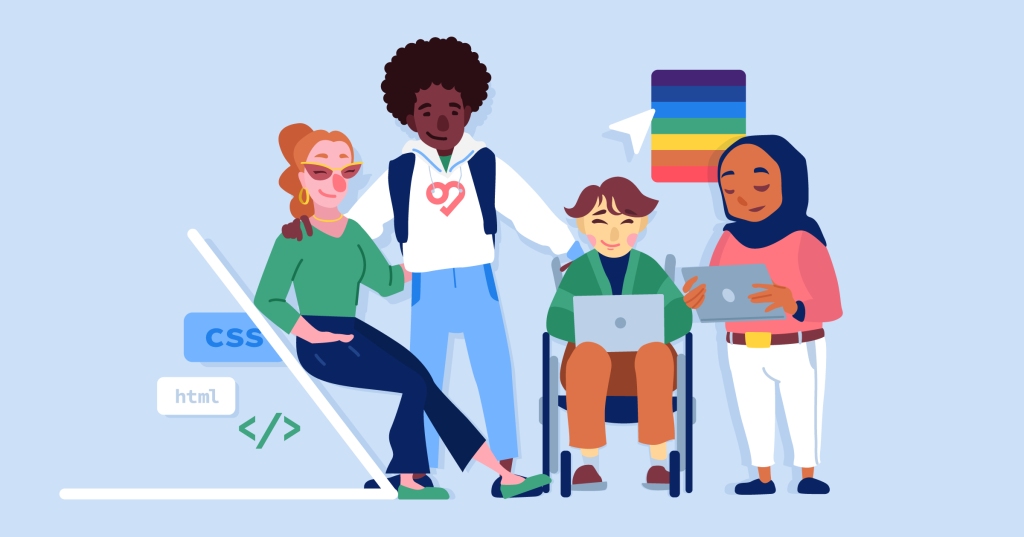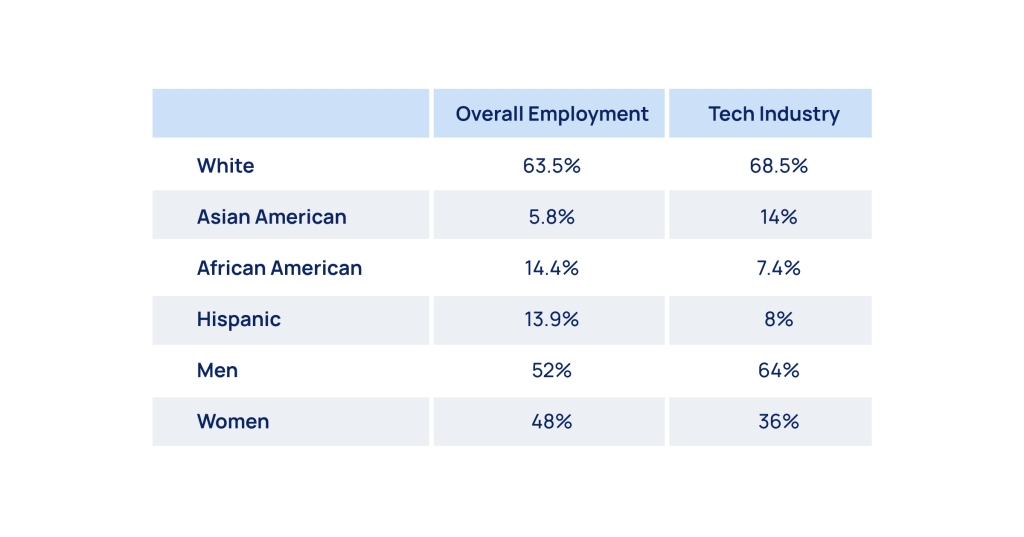Learn how an inclusive workforce benefits your business

Diversity is not just a fact of life; it’s one of its most awe-inspiring facets. Inclusiveness is healthy
for individuals and on a communal level; it promotes cultural, economic, and social vitality and
innovation.
Black feminist and LGBTQIA+ icon Audre Lorde said it best,
“It’s not our differences that divide us. It is our inability to recognize, accept, and celebrate those differences”.
Empathy for the Other may not always come easy; we have to make a conscious effort. Even
the most well-meaning people can have biases, perhaps without being aware of them. Biases
come in two forms: conscious and unconscious. A conscious bias is when a person knows they
are being prejudiced and are doing it purposefully. There can be malicious intent involved. For
example, someone who only wants a male mechanic because they think women know nothing
about cars is making a consciously biased choice.
An unconscious bias is also called an implicit bias. These biases sneak under the radar and
may be used in making snap judgments that aren’t always based on facts. For example,
deciding to vote for a particular candidate because they seem like someone you would enjoy
getting a beer with, is an unconscious bias. Of the two, implicit biases are the more insidious
and are especially dangerous in the workplace.
Companies are recognizing the need for a diverse workforce, and as a way to address biases,
they are implementing Diversity, Equity, Inclusion, and Belonging (DEIB) policies. When we talk
about diversity and Inclusiveness, we mean a workplace culture and hiring policies that
advocate for the rights of women, minorities, LGBTQIA+ people, and people with disabilities.
Missed Opportunities
Diversity is one of those buzzwords that is often tossed around by CEOs more interested in the
optics than actual meaningful change. It’s easier to be vocal about all the policies you are
implementing than it is to do the real work.
Tech companies are especially guilty; known for being a white boy’s club, their usual modus
operandi is to respond to allegations about lack of diversity by releasing annual workplace
statistics and restating commitments to improving equality. Their efforts fail to change much, as
data shows women, BIPOC workers, the LGBTQIA+ community, and disabled people continue
to face discrimination and be underrepresented in the tech industry.
According to data from the US Equal Opportunity Employment Commission, compared to the
overall private sector employment, the tech industry falls short on almost every level.

In 2020, according to a USA Today analysis of the 50 largest companies in Standard & Poor’s
100, less than 2% of the top executives were Black. Their analysis also shows that company
after company released statements in solidarity with the Black community and the injustice of
George Floyd’s murder, yet so few of them made any radical change to address systemic
racism.
A workforce where the decision-makers are overwhelmingly white is detrimental to the business.
It stunts the growth of the company. The gender wage gap has become a concern. Women and
minorities don’t reach leadership roles. Gender and racial insensitivity can be a blind spot when
marginalized groups don’t have a seat at the table.
Why It Matters
Promoting diversity and inclusion in your company not only has a positive effect on the lives of
the marginalized communities that make up a huge part of the US population, it has a positive
effect on your bottom line as well. A bigger, more diverse talent pool means quality people and
innovative solutions. Research shows that diverse tech companies are not only more profitable,
but they also show an increase in shareholder value.
There has been a massive uptick in STEM jobs
According to the U.S. Bureau of Statistics, in the next ten years, STEM jobs will see a 10.8%
increase in job growth, while non-STEM jobs will increase by 4.9%. If tech companies continue
to use their traditional methods of hiring without making diversity a priority, these jobs will be
unavailable to a huge part of the workforce that is mainly composed of women and
underrepresented minorities.
Negative stereotypes impact the talent pool
Marginalized groups are operating under systemic oppression, which means they are already
working twice as hard to get half as far. Antiquated stereotypes like ‘women don’t pursue
computer science degrees’ originate from anti-feminist gender roles where a woman is a
homemaker and has no need for a college degree. These stereotypes become self-fulfilling
prophecies when women feel discouraged by the lack of jobs in the tech industry.
Brand loyalty is built on diversity
Marginalized communities make up a substantial chunk of the overall population. When they
aren’t being catered to and their concerns aren’t being addressed, they won’t buy your product.
Brand loyalty is built when each individual feels like your product or service is for them.
Diversity means creativity
Diversity is especially important in the tech industry where creative ideas and innovative
solutions can make or break your company. A varied group of people with different
backgrounds, education and skill levels, and life experiences means unique problem-solving
abilities that they can bring to the table. Retaining the best talent begins with valuing them for
their unique perspectives.

How to Encourage Diversity and Inclusion
Expand beyond traditional channels
DEIB starts with your hiring policies; how you choose to advertise for jobs, where you post your
ads, how you shortlist candidates, who interviews them, and ultimately the onboarding process,
all need to be aligned with your inclusive policies.
- Ensure the actual ad has inclusive language that emphasizes skills and experience and
not just college degrees. Be sure to provide wage transparency. The job application
should be accessible in various formats. - Post jobs in a variety of places that target a diverse talent pool. Veterans, people
transitioning from other industries, people dealing with mental health issues, and people
with mobility issues are all excellent resources. - Create a diverse recruiting team and interview panel by ensuring women, POC,
LGBTQIA+ people, etc. are part of both the recruiting team and the interview panel. - Remote work opens up literally an entire world of possibilities. A work management tool
like Swit can make asynchronous collaboration with your team efficient and effective. - The onboarding process is made easier when you have a resource deck that each new
employee can go through. Clearly explain expectations and timelines to the employee.
Give them time to settle in. Reiterate your commitment to DEIB.
Companies like T-Mobile take a novel approach to interdepartmental communication;
customer-facing employees spend time in tech-developing teams for career development. They
are a Team Of Experts who excel at customer service and also have the technical know-how to
help customers handle issues.
Companies such as PathForward and IRelaunch have what they call returnships; they help
people return to work with refresher courses. When employees take parental leave or go back
to school, they know they have a job waiting for them when they are ready to go back to work.
Butterball and Fresh’N’Lean actively hire employees who were incarcerated or have a criminal
history. 650,000 people are released from prison every year and they have spent much of that
time learning different skills and trades. They already have the required training to do the job
well.
Develop a peer mentorship program
Mentorship programs improve employee retention. The learning curve for new hires is smoother
when they are paired with veteran employees who can show them the ropes. A mentorship
program is much more successful when leaders and mentors are a diverse group.
Prioritize equity and flexibility in policies
Creating a work environment conducive to DEIB means the employees are able to maintain a
healthy work-life balance, where they get paid time off, and mental health days, and can take
advantage of a flexible work schedule to handle their day-to-day obligations. It also means
providing daycare and parental leave and making work accessible and inclusive for people with
disabilities who may be homebound.
Companies like Swit use an asynchronous work model where employees from various time
zones maintain separate schedules yet still collaborate well. Parental leave, an education fund,
annual work retreats, care packages for work anniversaries, birthday bonuses, Employee of the
Month prizes, Tea Time check-ins, and monthly break rooms and games are all ways that Swit
keeps employees connected and involved with the company.
If the tech world is to continue evolving, Diversity, Equity, Inclusion, and Belonging policies have
to be made an inherent part of the workplace culture. For more information on how to
incorporate DEIB through an asynchronous workforce contact our team today!